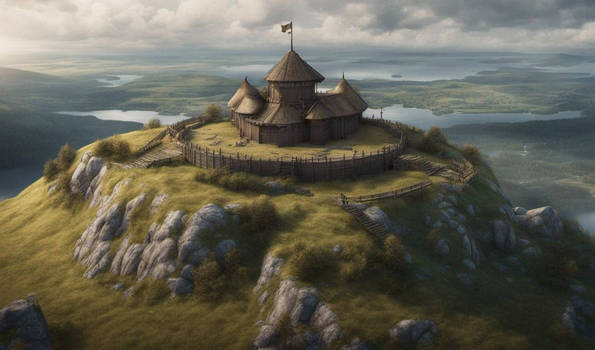- Galactic Credits
- ᖬ1,696,715
- Silver
- €233,074

History of the Kingdom
Ever since the dawn of Man, Eirelunn was an inhospitable land in which numberless horrors of the most exotic kind lurked and plagued all those who attempted to colonize it. Following the Fae Wars, which resulted to the dominion of Man over the isle, Eirelunn was transformed forever. Although diminished, the Fae survived in isolation and perpetual hostility with Man, some hiding in hidden settlements in the highlands while others devolved into cannibalistic barbarian clans of raiders.
Man, alas, was not as victorious as one may think. Although having dominated the feral isle of Eirelunn, the influence and ancient magicks of the Fae were quick to mesmerize the Man, which gradually splintered in numerous pagan tribes, adopting much of the fragmented lore left by the Fae.
After eons of struggles with the Elements, the Fae, barbarian hordes and abysmal beasts, House Ulfbitenn finally managed to unite much of the Eastern parts of Eirelunn, known as Oirtheroch into one large realm; The first Kingdom of Eirelunn.
Eirish Feudalism
United it may be, the Kingdom hasn't lost the feudalism that characterised Eirelunn throughout the aeons. Respecting the archaic traditions of government, the Kingdom is ran by several feudal lords who hold sway over territories as large as entire provinces.

Baronies
The very core of the Eirish realm are the Barons. Lesser nobles who hold sway over their very own land and serve as local enforcers of law and order, the Barons are either the youngest of Noble Houses, or branches of the great Noble families who maintain control of their bloodline in sub-provincial level.

Earldoms
Nobles who hold enough influence and prestige to gain or maintain their rule over an entire Province are known as the Earls. Such power is granted to nobles trusted by the King, or allies who have pledged their allegiance to the Eirish Crown. They have the ability to establish laws and muster troops under their banner to enforce them. In times of war, the Earls become the bannermen of the Kingdom's royal hosts, providing the bulk of the troops for their King and Realm.

Duchies
To establish a Duchy is to be among the most powerful feudal lords of the Eirish Realm. Unlike Earldoms and Baronies, a Duchy is forged by mighty warlords and powerful nobles who hold enough influence in the Red Court to be granted the Ducal Seal; A medalion that establishes them and their House as members of the high nobility. The Duchies are vassal Realms on their own right, holding near-complete autonomy, save for a symbolic tithe offered to the King as a sign of submission. Dukes and Duchesses are the most influencial members of the Red Court, and those who usually toy with the strings of politics and court scheming.

The Red Court
Perhaps one of the most hated symbols of Ulfbitenn opression, the Red Court has grown to symbolize unity in the Realm, serving as the Royal Court and centre of government for the Realm. In times of grand celebrations, coronations or nominations of nobility, the realm gathers in the city of Dunwyn, in Dunwyn Province, and participates in tournaments, games and feasts. In times of peace, the King signs and releases decrees, accepts ambassadors and deals with legal, diplomatic and other affairs that demand his attention. In times of war, the King summons his nobles in the Red Court, where the declarations are conducted and plans are drawned...
Furthermore, in the Red Court's archives, the Book of Nobles is stored; A large volume containing all recognized Noble Houses of the Realm, and their lineage.